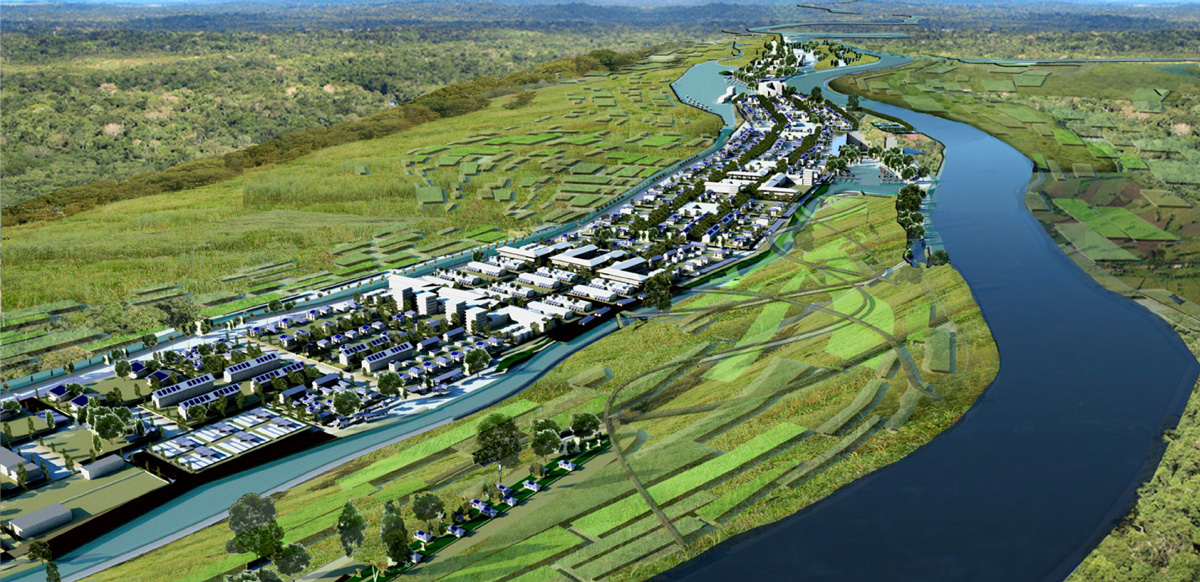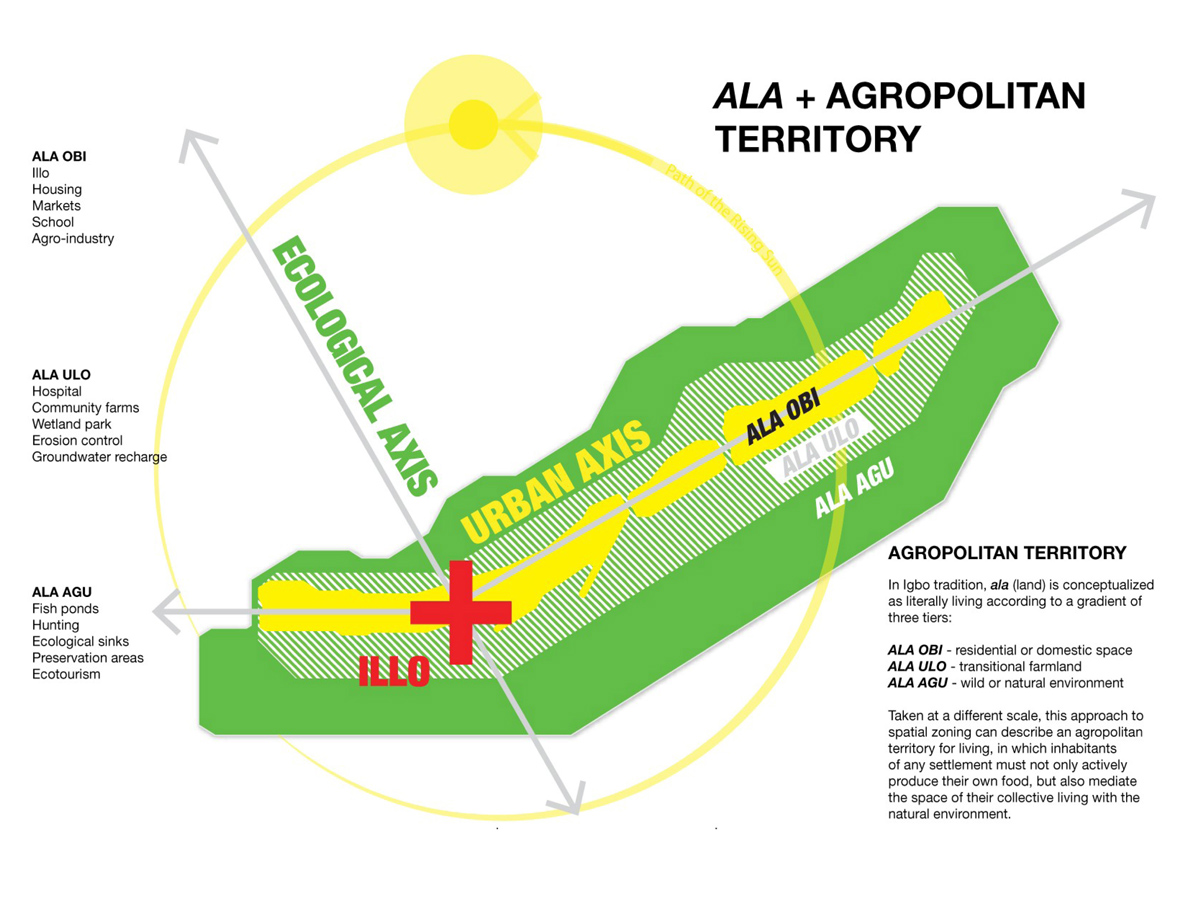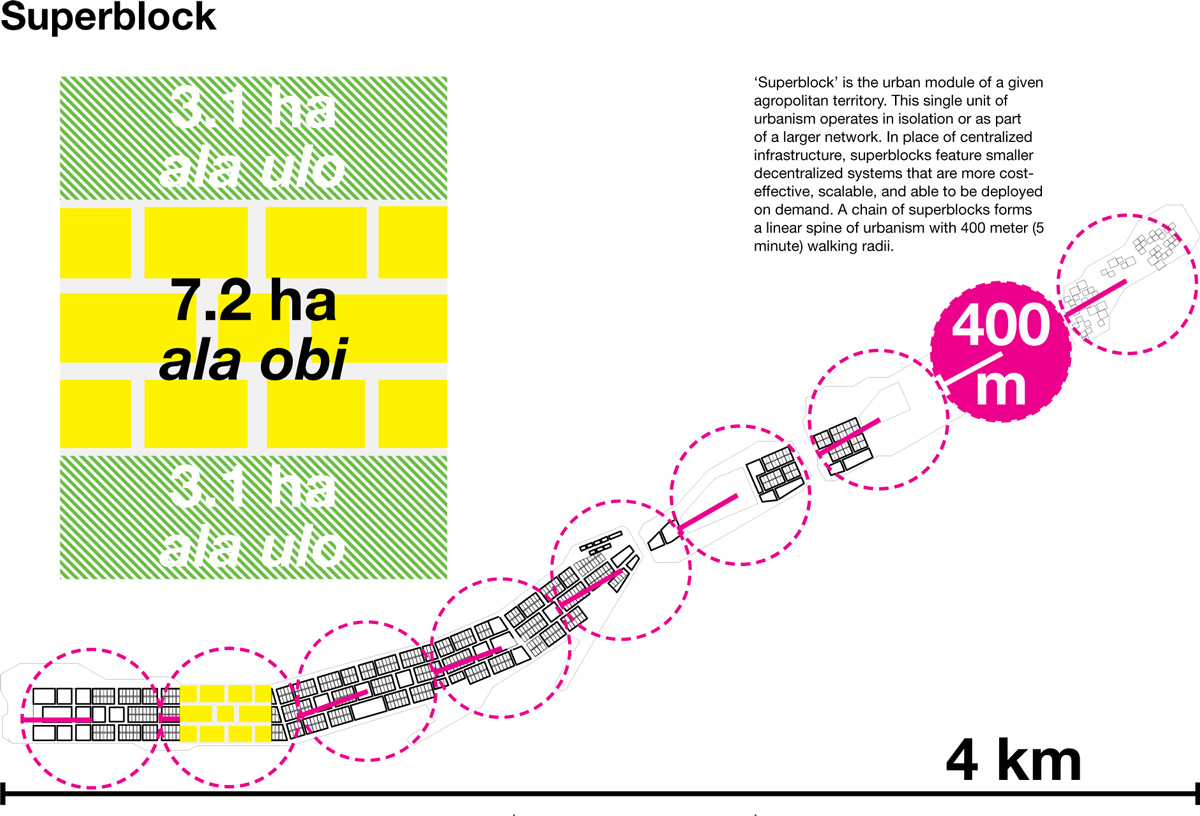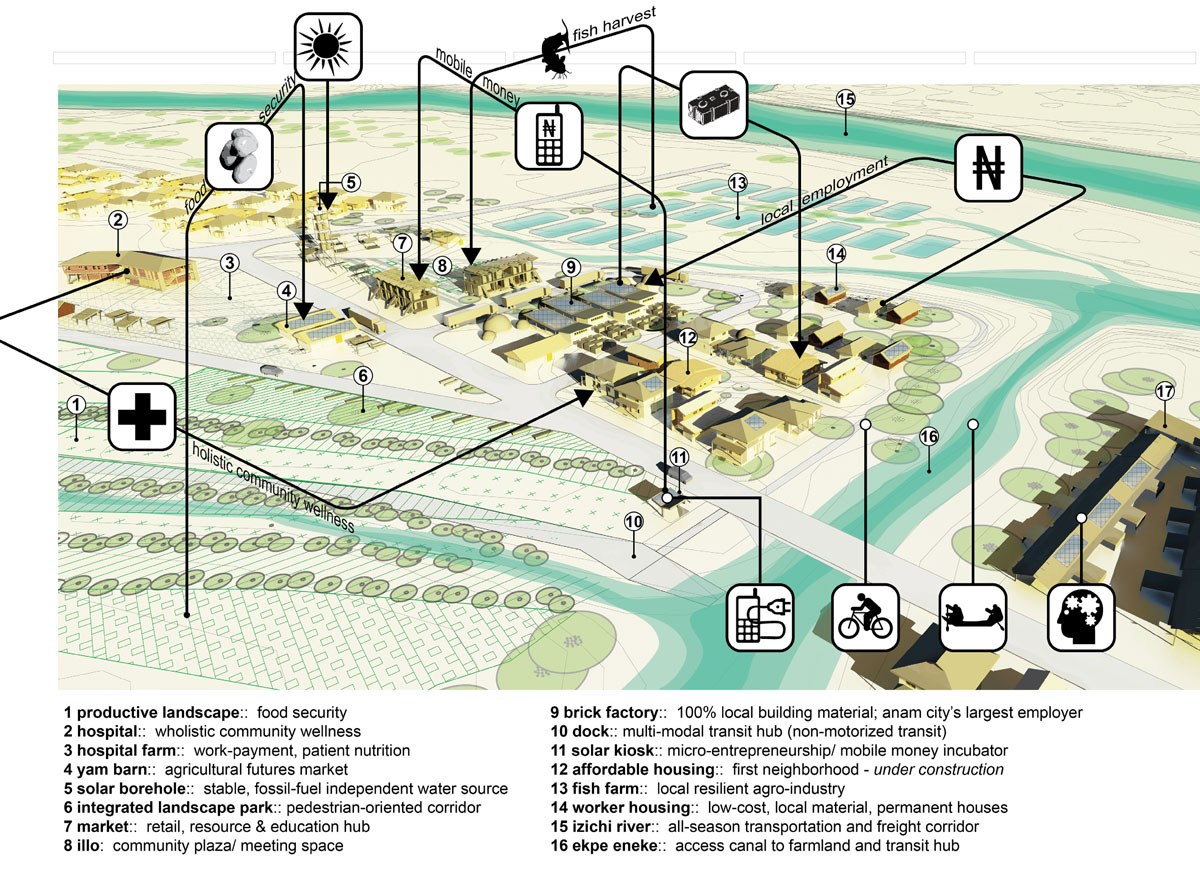|
|
Anam City, Nigeria, Africa |
|
|
|
|
|
|

source: http://lowdo.net/anam-cit
y

urban eco axes
source: http://lowdo.net/anam-cit
y

Anam superblock
source: http://lowdo.net/anam-cit
y

source: http://lowdo.net/anam-cit
y
|
ANAM city is a dynamic model for sustainable development that balances ecology with economic growth, delivers world-class quality of life across generations and leverages technology within the African culture of collective progress.
ANAM is simultaneously a model city and a new model for sustainable development in Africa. It is a project that fundamentally reorganizes society in order to bring about real and lasting change. It is an alternative paradigm — variably referred to as agropolitan or rurban in development planning circles — that combines the benefits of modern urban living with those of rural communities and traditional productive landscapes. It is at its core an initiative to generate local economic opportunity, but it is equally a strategy for using technology — within an integrated logics framework for conceptualizing the African city — to improve people’s lives.
The process for the conceptual and physical development of ANAM city is based on an open and interdisciplinary approach that includes a research, consultation and open-soource design methods. Rather than a linear progression, the process is concurrent, iterative, and fundamentally an evolution of hybridity due to the unique nature of this project. The methodology incorporates phases that balance the many scales of influence as well as the diversity of stakeholders that will be integrated with the new urban fabric. Local cultural knowledge, site specific realities, international standards and continental concerns each informed the scope of research and final recommendations. The results of this process is owned by the stakeholders and open to the world.
source: http://anamcity.com/ |
|
2008 - 2025 disclaimer
|

